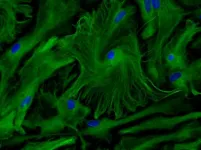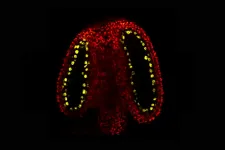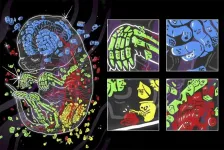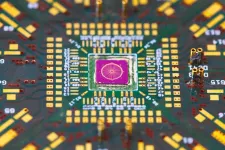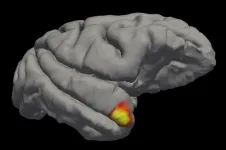(Press-News.org) Over years of studying antibody responses against the flu in the Wilson lab at the University of Chicago, researchers kept coming up with a strange finding: antibodies that seemed to bind not only to the flu virus, but to every virus the lab could throw at them. Since antibodies are usually highly specific to individual pathogens, in order to maximize their targeted protective response, this pattern was extremely unusual.
Until finally, they realized: The antibodies weren't responding to the viruses, but rather to something in the biological material in which the viruses had been grown. In every case, the virus had been propagated in chicken eggs -- more specifically, in a part of the egg called the allantois. The findings were published on June 15 in mBio.
"Growing vaccines in eggs is the old school way of doing things because it's cheap and you can grow a lot of virus in eggs," said first author Jenna Guthmiller, PhD, a postdoctoral fellow at UChicago. "Now we're finding that these antibodies bind to this glycan - a sugar molecule - found in eggs, which means that people who are getting vaccinated are producing an antibody response against this egg component that's not related to the virus at all."
The fact that vaccines grown in eggs can lead to this off-target antibody response is unexpected, but the implications aren't yet known. It could mean that the immune system diverts resources away from developing protective antiviral antibodies to produce these egg sugar antibodies instead, which could have implications for vaccine effectiveness.
It's important to note that these antibodies do not bind to known egg allergens, indicating that they likely are not the culprits behind egg allergies, Guthmiller said. "It doesn't seem to be harmful, but it may not be beneficial, and it may be affecting immunity, and that's the important next step."
It took the team years to determine that the antibodies were linked, not to the viruses they were studying, but rather to the eggs in which they were grown. "No joke, we spent years thinking about this," said Guthmiller. "But once we figured it out, it was straightforward. And we found that it's very specific to the flu vaccine grown in this one compartment, in the allantois. This isn't seen with vaccines grown in other chicken cells."
The antibodies target a sugar molecule, known as a glycan, called N-acetyllactosamine (LacNAc), with a sulfur modification. LacNAcs are a common glycan in humans, but the specific sulfur modification of LacNAc found in eggs is not known to be expressed in humans. Because of this, humans can produce antibodies against this sulfur-modified glycan.
When the researchers dug into past studies on flu antibody responses, they found that this antibody response against LacNAc appears to be fairly common following flu vaccination. However, some people do not seem to develop the anti-egg antibodies, and it doesn't appear that producing the anti-egg antibodies reduces the immune system's ability to produce anti-flu antibodies -- though it's not clear whether or not there is an impact on vaccine effectiveness.
"There's a little bit of evidence so far that suggests vaccines prepared by other methods are more effective than those grown in eggs, but the precise reasons aren't known," said Guthmiller. "This could be a potential mechanism, but we weren't able to address that in this study."
So far, there is no evidence that the presence of these antibodies has any negative impact on an individual's health. "We just really don't know what function these antibodies have," said Guthmiller. "So many people get the flu vaccine every year, and adverse events are extremely uncommon, so there's no reason to suspect that this might cause any problems."
More research is needed to determine what, if anything, these anti-egg antibodies mean for the effectiveness of the flu vaccine. "We don't know how these antibodies impact our flu-specific response. There may be competition between B cells against the flu and these egg glycans, which could be impacting immunity. And if there is an association between egg antibodies and reduced immunity, we need to look at alternative methods for flu vaccine production. Anything that can improve vaccine production is something that we should be considering seriously."
INFORMATION:
The study, "An Egg-Derived Sulfated N-Acetyllactosamine Glycan Is an Antigenic Decoy of Influenza Virus Vaccines," was supported by the National Institute of Allergy and Infectious Diseases (U19AI082724, U19AI109946, U19AI057266, P01 AI097092, R01AI145870-01, HHSN272201400005C, HHSN272201400008C, and 75N93019C00051) and the National Center for Functional Glycomics (R24 GM137763). Additional authors include Henry A. Utset, Carole Henry, Lei Li, Nai-Ying Zheng, Marcos Costa Vieira, Min Huang, Sarah Cobey, and Patrick Wilson of UChicago; Weina Sun and Peter Palese of Icahn School of Medicine at Mount Sinai; and Seth Zost and Scott E. Hensley of Perelman School of Medicine, University of Pennsylvania.
About the University of Chicago Medicine & Biological Sciences
The University of Chicago Medicine, with a history dating back to 1927, is one of the nation's leading academic health systems. It unites the missions of the University of Chicago Medical Center, Pritzker School of Medicine and the Biological Sciences Division. Twelve Nobel Prize winners in physiology or medicine have been affiliated with the University of Chicago Medicine. Its main Hyde Park campus is home to the Center for Care and Discovery, Bernard Mitchell Hospital, Comer Children's Hospital and the Duchossois Center for Advanced Medicine. It also has ambulatory facilities in Orland Park, South Loop and River East as well as affiliations and partnerships that create a regional network of care. UChicago Medicine offers a full range of specialty-care services for adults and children through more than 40 institutes and centers including an NCI-designated Comprehensive Cancer Center. Together with Harvey-based Ingalls Memorial, UChicago Medicine has 1,296 licensed beds, nearly 1,300 attending physicians, over 2,800 nurses and about 970 residents and fellows.
Visit UChicago Medicine's health and science news blog at http://www.uchicagomedicine.org/forefront.
Twitter @UChicagoMed
Facebook.com/UChicagoMed
Facebook.com/UChicagoMedComer
Astrocytes are cells in the brain which have long been considered only as mere support cells for neurons. In recent years, the study of astrocytes has grown, gradually revealing their importance in brain function. Researchers from Inserm, CNRS and Collège de France at the Center for Interdisciplinary Research in Biology have now uncovered their crucial role in closing the period of brain plasticity that follows birth, finding them to be key to the development of sensory and cognitive faculties. Over the longer term, these findings will make it possible to envisage new strategies for reintroducing brain plasticity in adults, thereby promoting rehabilitation following brain lesions or neurodevelopmental disorders. This research has been published in Science.
Brain plasticity is ...
Hereditary information is passed from parent to offspring in the genetic code, DNA, and epigenetically through chemically induced modifications around the DNA.
New research from the John Innes Centre has uncovered a mechanism which adjusts these modifications, altering the way information beyond the genetic code is passed down the generations.
DNA methylation, one example of these epigenetic modifications, happens when a methyl group or chemical cap is added to the DNA, switching a gene, or genes, on or off.
As germline (eggs and sperm) cells develop some of the methyl markers are reset, affecting the information passed onto the next generation.
How this process ...
Although plastics have become an essential material, permeating almost all aspects of modern living, many of the inherent properties that make them useful in such a wide variety of applications also make them a serious environmental threat. In a special issue of Science, "Our Plastics Dilemma," four Reviews, two Perspectives, a Policy Forum, an associated Report and two News features examine a wide range of topics related to plastics and the problems they present. "As for much new technology, their development and proliferation occurred with little consideration for their impacts, but now it's impossible to deny their dark side as we confront a rapidly ...
Through the sequencing of more than 640,000 human exomes, researchers identify rare gene coding variants strongly associated with body mass index (BMI) - including the variant GPR75, which conferred protection from obesity in mouse models. Not only do the findings provide potential therapeutic targets for treating obesity, but they also demonstrate the power and versatility of massive-scale exome sequencing in discovering rare coding variants that could offer new and potentially translatable biological functions. Body fat is a highly heritable trait and the obesity to which body ...
Researchers could not confirm that a feature that supposedly signals the presence of Majorana bound states - the unusual quasiparticles that may become the cornerstone of topological quantum computing - was in fact due to elusive Majorana particles, in full-shell semiconductor/superconductor nanowires. Rather, this feature, known as zero bias conductance peak, can arise from another quantum phenomenon in these hybrid nanowire structures, the authors say. In recent years, intense research has been conducted on nanowire-based semiconductor-superconductor hybrid systems because predictions suggest that a topological superconductor state with Majorana zero modes (MZMs) can be engineered from them. Even though several experiments in such platforms have reported ...
Researchers introduce "sci-Space," a new approach to spatial transcriptomics that can retain single-cell resolution and spatial heterogeneity at scales much larger than previous methods. They used their approach to build single-cell atlases of whole sections of mouse embryos at 14 days of development. Single-cell RNA sequencing methods have led to great advances in understanding how organisms and complex tissues develop. Although cells' spatial organization is central to normal development, homeostasis, and pathophysiology, many single-cell RNA sequencing methods lose valuable contextual spatial information. Those that preserve spatial context between cells can be limited to a specific set of genes and/or ...
A new technique called sci-Space, combined with data from other technologies, could lead to four-dimensional atlases of gene expression across diverse cells during embryonic development of mammals.
Such atlases would map how the gene transcripts in individual cells reflect the passage of time, cell lineages, cell migration, and location on the developing embryo. They would also help illuminate the spatial regulation of gene expression.
Mammalian embryonic development is a remarkable phenomenon: a fertilized egg divides repeatedly and turns, in a matter of weeks or months, into a complex organism capable of a myriad of physiological processes and composed of a variety ...
Quantum computers promise great advances in many fields - from cryptography to the simulation of protein folding. Yet, which physical system works best to build the underlying quantum bits is still an open question. Unlike regular bits in your computer, these so-called qubits cannot only take the values 0 and 1, but also mixtures of the two. While this potentially makes them very useful, they also become very unstable.
One approach to solve this problem bets on topological qubits that encode the information in their spatial arrangement. That could provide a more stable ...
Current rates of plastic emissions globally may trigger effects that we will not be able to reverse, argues a new study by researchers from Sweden, Norway and Germany published on July 2nd in Science. According to the authors, plastic pollution is a global threat, and actions to drastically reduce emissions of plastic to the environment are "the rational policy response".
Plastic is found everywhere on the planet: from deserts and mountaintops to deep oceans and Arctic snow. As of 2016, estimates of global emissions of plastic to the world's lakes, rivers and ...
Scientists have long searched in vain for a class of brain cells that could explain the visceral flash of recognition that we feel when we see a very familiar face, like that of our grandmothers. But the proposed "grandmother neuron"--a single cell at the crossroads of sensory perception and memory, capable of prioritizing an important face over the rabble--remained elusive.
Now, new research reveals a class of neurons in the brain's temporal pole region that links face perception to long-term memory. It's not quite the apocryphal grandmother neuron--rather than a single ...
